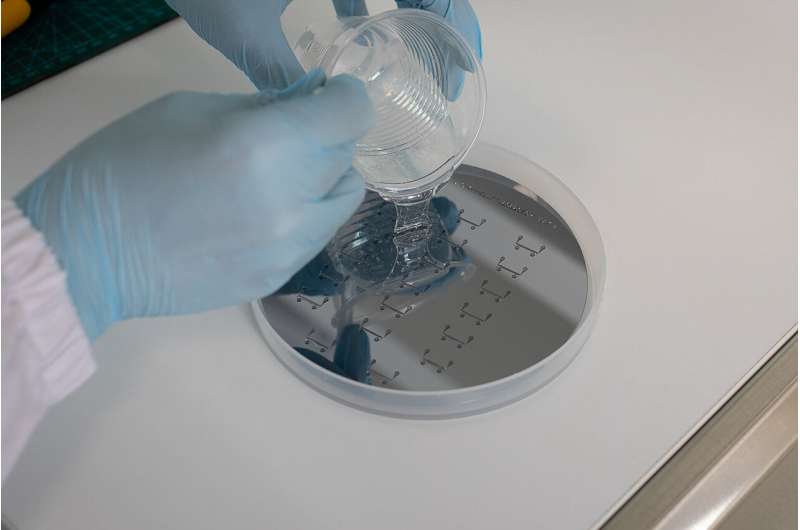Credit: University of Sydney
In Australia each year, approximately 55,000 people suffer a heart attack, with a similar number suffering from stroke. Many are caused by blood clots that block the flow of blood to the heart, often in at-risk individuals without any physical warning.
However, long before a heart attack or stroke occurs, tiny changes in the blood begin taking place. Often, blood flow is disturbed, leading to blood clotting and inflammation which can block blood vessels.
Award-winning University of Sydney biomedical engineer Dr. Arnold Lining Ju is developing a biomedical micro-device to detect these subtle platelet changes before a heart attack or stroke takes place.
Using a pin-prick test, the micro-device would take a blood sample from a person's finger. The sample would then be analyzed for platelet clotting and white cell inflammation responses, information that would be immediately processed by an external operating system.
"How this device would work is that an at-risk person, for example, someone with heart disease, would use it daily," said Dr. Ju from the Sydney Nanoscience Hub and Faculty of Engineering.
"Using a finger prick test, the device would monitor their blood and alert them to any potentially dangerous changes. If a change was detected, they would need to present for more monitoring at a hospital," said Dr. Ju, who is also a group affiliate of the Heart Research Institute's Thrombosis Group.
The research forms part of a long-term collaboration with the Director of Cardiovascular Research, CPC at the Heart Research Institute, Professor Shaun Jackson.
Professor Jackson said: "We hope this device will shed light on why and how blood clots form, which if successful, could one day be used in a range of health scenarios."
The University's School of Biomedical Engineering's new facilities will enable further engineering development for the microdevice, which is predicated on an integrated microfluidic chip.
Dr. Ju is working with a team of Ph.D. students to build highly sensitive computational fluid dynamics simulations to better understand the impact of mechanical forces that could lead to blood pooling and clots.
Biomedical engineering student Yunduo Charles Zhao said: "In the near future, we plan to apply artificial intelligence to understand an individual's blood work with the aim of creating a personalized blood profile of that person."
Research assistant Laura Moldovan said that, historically, it has been difficult to predict when a heart attack or stroke might happen: "They appear to occur at random, sometimes without any physical symptoms, however in fact there are tiny physical changes that occur in the blood—the key to this device is being able to sensitively monitor these microscopic changes."
More information: Lining Arnold Ju et al, Microfluidic post method for 3-dimensional modeling of platelet–leukocyte interactions, The Analyst (2022). DOI: 10.1039/d2an00270a
Journal information: Analyst
Provided by University of Sydney
























